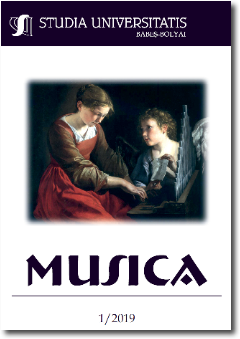ONTOLOGICAL AND AESTHETIC QUALITIES OF A SINGING SOUND
ONTOLOGICAL AND AESTHETIC QUALITIES OF A SINGING SOUND
Author(s): Tatyana Y. Gordeeva, Zagid R. Azhimov, Raushania R. Mirnaya, Alfia Rafisovna VoznesenskayaSubject(s): Fine Arts / Performing Arts, Music
Published by: Studia Universitatis Babes-Bolyai
Keywords: being; singing culture; singing sound; artistic creation; ‘the inexpressible’;
Summary/Abstract: The paper aims to reveal the existential qualities of a singing sound associated with a person’s spiritual and creative potential. Unlike any other voice manifestation of a person, a singing sound always represents the ideal area of a person’s existence and thus reveals the connection with the individual’s mental and creative potential. To reveal these relations, the authors used Heidegger’s philosophical aesthetic approach and Sintsov’s theory of the ‘inexpressible’ in art and culture, which examine the ontological foundations of artistic phenomena. The expression of certain continual mental processes that are not directly related to the production and formation of certain meanings should be the initial task of a singing sound. A singing sound can be viewed as a manifestation of artwork (Heidegger) since in its ‘material component’, it expresses the ‘essence’ and ‘truth’ of man as a creator, acts as a source of man’s multiple relations with the world (‘being-in-the-world’), is characterized as ‘composite’ due to having an idealistic-materialistic nature, and contains in itself a reason for self-movement. The source of the entelechy of singing sound is ‘inexpressible’ and contains all stages of its being (‘pre-sounding – sounding – post-sounding’). The revealed qualities of a singing sound, artistry and the connection with the ‘inexpressible’, allow defining singing sound as an existential phenomenon.
Journal: Studia Universitatis Babes-Bolyai - Musica
- Issue Year: 64/2019
- Issue No: 1
- Page Range: 67-84
- Page Count: 18
- Language: English

